说明
Nebula Graph 是一款开源的、分布式的、易扩展的原生图数据库,能够承载包含数千亿个点和数万亿条边的超大规模数据集,并且提供毫秒级查询。
当前Nebula Graph的最新版本是3.2.1, 根据官方的文档进行配置
支持分布式. 相对于Neo4j, TigerGraph这些图数据库, Nebula 是面向分布式设计的, 因此对集群的支持比较完备, 在规模上上限要高很多. 在实际项目中存储了180亿的点边, 这个数量对于Neo4j和TigerGraph是比较困难的.
支持图空间. 各个图空间的ID是互不干扰的, 但是在同一个图空间里ID的类型和长度必须一致. 注意这个一致约束的是所有的点和边. Nebula 可以使用int64作为ID, 也可以用字符串, 但是字符串需要指定一个长度, 例如64个字节. 相对于只能用长整数的Neo4j, ID设计上更自由灵活.
-
点对应的类型叫TAG, 边对应的类型叫EDGE
TAG和EDGE都会对应一组的属性(map, 或者说dict)
一个点可以对多个TAG, 每个TAG一组属性, 多组属性. 项目中建议一开始不要用多TAG, 在整个图结构稳定后, 再做合并
一个边只对应一个EDGE, 一组属性
Nebula 用的是自定义的查询语法 GQL, 和 cypher 语法基本一样
除了点边的ID和关联关系外, 只有带索引的属性可以查询. 这点和其它图数据库不一样, 其它数据库即使没有索引, 慢是慢点但是不报错, Nebula直接给你返回错误.
对于返回数量较大的查询, Nebula会强制查询必须带limit
Nebula 单节点稳定性是有问题的, 在3.2.1版本中观察到偶尔会出现服务自行退出, 如果在生产环境使用, 需要有后台监控进行心跳检测和自动启动
GQL 常用查询
下面列出一些常用的查询
-- 列出图空间 SHOW SPACES; -- 列出tag(点类型)和edge(边类型), 需要先 USE 一个图空间 SHOW TAGS; SHOW EDGES;
列出某一类型的点和边
MATCH ()-[e:follow]-() RETURN e MATCH (v:player) RETURN v
带条件的查询, 在结果数量较多时必须带limit, 否则Nebula会报错
match (v:ADDRESS)-[e]-() where id(v)==\"ADD:82388116\" return v,e limit 100
基础配置和使用
在上面的链接中, 提供了最小的配置和测试代码
pom.xml 增加包依赖
对于Nebula Graph 3.2.1, 需要使用3.0.0的版本. client的每个版本只能对应特定的一两个服务端版本
<dependency> <groupId>com.vesoft</groupId> <artifactId>client</artifactId> <version>3.0.0</version> </dependency>
Java调用
Java调用主要是三部分, 创建连接池, 创建会话, 执行查询
创建 NebulaPool 连接池
连接到地址127.0.0.1, 端口9669, 连接池大小100. 注意地址和端口是一个列表, Nebula是支持集群的. 连接时不需要用户和密码
NebulaPool pool = new NebulaPool();
try {
NebulaPoolConfig nebulaPoolConfig = new NebulaPoolConfig();
nebulaPoolConfig.setMaxConnSize(100);
List<HostAddress> addresses = Arrays.asList(new HostAddress("127.0.0.1", 9669));
Boolean initResult = pool.init(addresses, nebulaPoolConfig);
if (!initResult) {
log.error("pool init failed.");
return;
}
} catch ()
//...创建 Session 会话
创建会话时需要用户名和密码
Session session = pool.getSession("root", "nebula", false);执行查询
创建一个SPACE, 然后使用这个SPACE, 创建一个TAG person, 创建一个EDGE like
String createSchema = "CREATE SPACE IF NOT EXISTS test(vid_type=fixed_string(20)); "
+ "USE test;"
+ "CREATE TAG IF NOT EXISTS person(name string, age int);"
+ "CREATE EDGE IF NOT EXISTS like(likeness double)";
ResultSet resp = session.execute(createSchema);
if (!resp.isSucceeded()) {
log.error(String.format("Execute: `%s', failed: %s",
createSchema, resp.getErrorMessage()));
System.exit(1);
}添加一个点记录
String insertVertexes = "INSERT VERTEX person(name, age) VALUES "
+ "'Bob':('Bob', 10), "
+ "'Lily':('Lily', 9), "
+ "'Tom':('Tom', 10), "
+ "'Jerry':('Jerry', 13), "
+ "'John':('John', 11);";
ResultSet resp = session.execute(insertVertexes);
if (!resp.isSucceeded()) {
log.error(String.format("Execute: `%s', failed: %s",
insertVertexes, resp.getErrorMessage()));
System.exit(1);
}查询
String query = "GO FROM \"Bob\" OVER like "
+ "YIELD $^.person.name, $^.person.age, like.likeness";
ResultSet resp = session.execute(query);
if (!resp.isSucceeded()) {
log.error(String.format("Execute: `%s', failed: %s",
query, resp.getErrorMessage()));
System.exit(1);
}
printResult(resp);在 SpringBoot 项目中使用 Nebula Graph
pom.xml 增加包依赖
<dependency> <groupId>com.vesoft</groupId> <artifactId>client</artifactId> <version>3.0.0</version> </dependency>
Session工厂: NebulaSessionFactory.java
配合@Bean(destroyMethod = "close"), 创建一个工厂类, 接收pool并实现close()方法
public class NebulaSessionFactory {
private final NebulaPool pool;
private final String username;
private final String password;
public NebulaSessionFactory(NebulaPool pool, String username, String password) {
this.pool = pool;
this.username = username;
this.password = password;
}
public Session getSession() {
try {
return pool.getSession(username, password, false);
} catch (NotValidConnectionException|IOErrorException|AuthFailedException|ClientServerIncompatibleException e) {
throw new RuntimeException("Nebula session exception", e);
}
}
public void close() {
pool.close();
}
}为什么不直接将 NebulaPool 配置为Bean? 因为 Session 每次创建时需要带用户名密码, 将密码作为config注入到每个Service中肯定是大家都不愿意看到的.
配置修改: application.yml
这里的值如果不打算使用profile配置, 可以直接写入
hosts是逗号分隔的地址端口列表, 例如
10.22.33.33:9669,10.22.33.34:9669
myapp:
nebula:
hosts: @nebula.hosts@
username: @nebula.username@
password: @nebula.password@
max-conn: @nebula.max-conn@Spring启动配置: NebulaGraphConfig.java
应用启动时读取配置, 创建 NebulaPool, 并实例化 NebulaSessionFactory, destroyMethod = "close", 这个表示在项目shutdown时会调用Bean的close方法释放资源.
@Configuration
public class NebulaGraphConfig {
@Value("${myapp.nebula.hosts}")
private String hosts;
@Value("${myapp.nebula.max-conn}")
private int maxConn;
@Value("${myapp.nebula.username}")
private String username;
@Value("${myapp.nebula.password}")
private String password;
@Bean(destroyMethod = "close")
public NebulaSessionFactory nebulaSessionFactory() {
List<HostAddress> hostAddresses = new ArrayList<>();
String[] hostList = hosts.split(",[ ]*");
for (String host : hostList) {
String[] hostParts = host.split(":");
if (hostParts.length != 2 || !hostParts[1].matches("\\d+")) {
throw new RuntimeException("Invalid host name set for Nebula: " + host);
}
hostAddresses.add(new HostAddress(hostParts[0], Integer.parseInt(hostParts[1])));
}
NebulaPoolConfig poolConfig = new NebulaPoolConfig();
poolConfig.setMaxConnSize(maxConn);
NebulaPool pool = new NebulaPool();
try {
pool.init(hostAddresses, poolConfig);
} catch (UnknownHostException e) {
throw new RuntimeException("Unknown Nebula hosts");
}
return new NebulaSessionFactory(pool, username, password);
}
}Service调用
在 Service 中进行调用
@Service
@Slf4j
public class GraphServiceImpl implements GraphService {
@Autowired
private NebulaSessionFactory sessionFactory;
@Override
public <T> NebulaResult<T> query(String graphSpace, String gql) {
Session session = null;
try {
log.info("GQL: {}", gql);
session = sessionFactory.getSession();
NebulaResult<Void> res = query(session, "USE " + graphSpace);
if (!res.isSuccess() || res.getResults() == null || res.getResults().size() == 0) {
log.error("Failed to use space:{}", graphSpace);
return null;
}
if (!graphSpace.equals(res.getResults().get(0).getSpaceName())) {
log.error("Failed to use space:{}, result:{}", graphSpace, res.getResults().get(0).getSpaceName());
return null;
}
return query(session, gql);
} catch (IOErrorException e) {
log.error(e.getMessage(), e);
return null;
} finally {
if (session != null) {
session.release();
}
}
}
private <T> NebulaResult<T> query(Session session, String gql) throws IOErrorException {
String json = session.executeJson(gql);
return JacksonUtil.extractByType(json, new TypeReference<>() {});
}
}辅助类 NebulaResult.java 等
外层结构
这里定义了 json 格式响应的外层结构
@Data
public class NebulaResult<T> implements Serializable {
private List<Error> errors;
private List<Result<T>> results;
@JsonIgnore
public boolean isSuccess() {
return (errors != null && errors.size() == 1 && errors.get(0).getCode() == 0);
}
@Data
public static class Error implements Serializable {
private int code;
}
@Data
@JsonIgnoreProperties(ignoreUnknown = true)
@JsonInclude(JsonInclude.Include.NON_NULL)
public static class Result<T> implements Serializable {
private String spaceName;
private List<Element<T>> data;
private List<String> columns;
private Error errors;
private long latencyInUs;
}
@Data
public static class Element<T> implements Serializable {
private List<Meta<T>> meta;
private List<Serializable> row;
}
@Data
public static class Meta<T> implements Serializable {
private String type;
private T id;
}
}内层因为区分Edge和Vertex, 结构不一样. 如果是混合返回的结果, 可以用 Serializable
String gql = "match (v:ADDR)-[e]-() where id(v)==\"ADD:123123\" return v,e limit 100";
NebulaResult<Serializable> res = graphService.query("insurance", gql);
log.info(JacksonUtil.compress(res));
Assertions.assertThat(res).isNotNull();对于边, 需要使用结构化的ID
@Data
@JsonIgnoreProperties(ignoreUnknown = true)
@JsonInclude(JsonInclude.Include.NON_NULL)
public class EdgeId implements Serializable {
private int ranking;
private int type;
private String dst;
private String src;
private String name;
}用这个结构进行查询
NebulaResult
res3 = graphService.query("t_test1", "MATCH ()-[e:follow]-() RETURN e");
对于点, ID就是String
NebulaResult
res2 = graphService.query("t_test1", "MATCH (v:player) RETURN v");
以上是Nebula Graph和SpringBoot環境連結和查詢怎麼實現的詳細內容。更多資訊請關注PHP中文網其他相關文章!
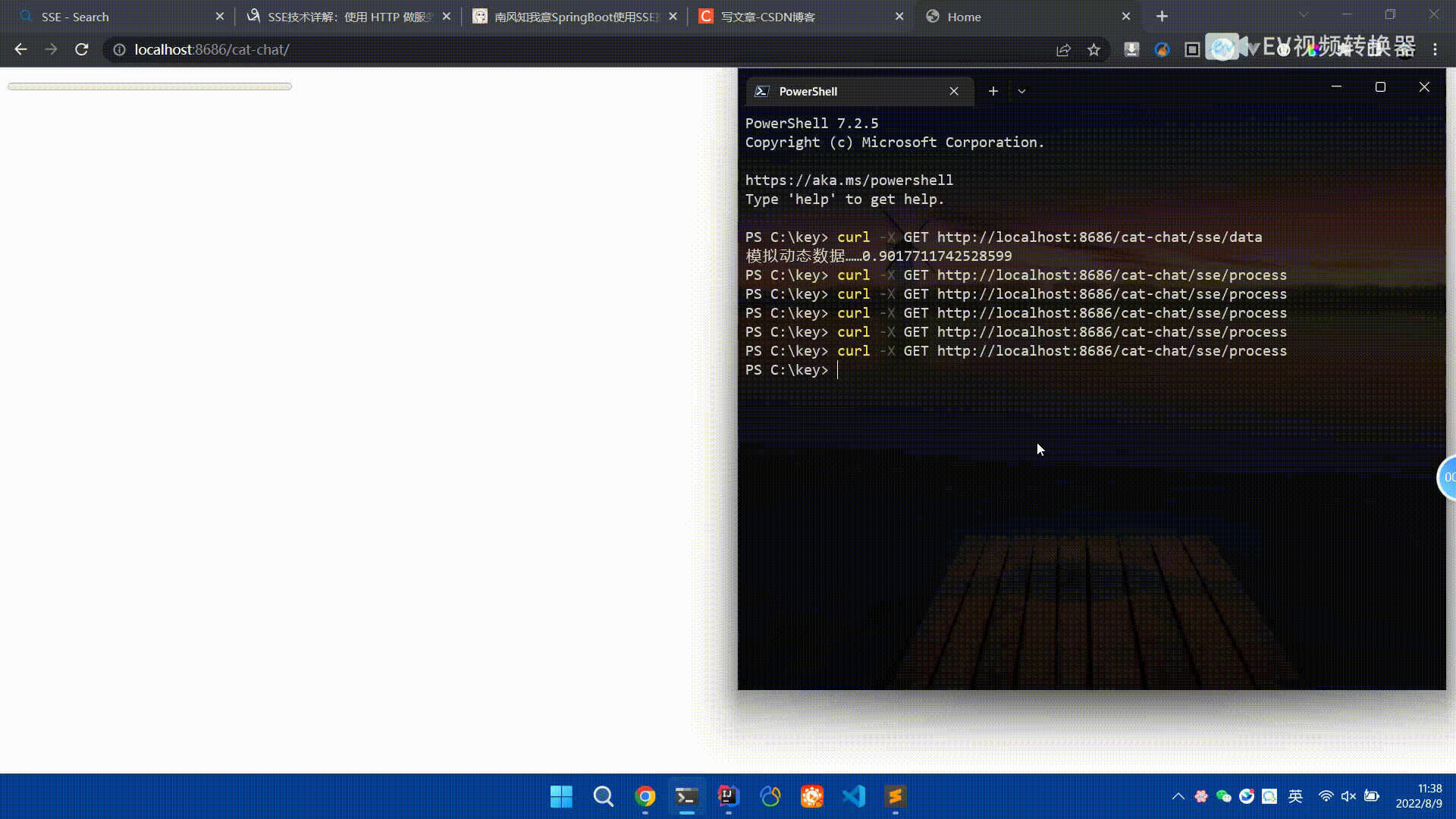 Spring Boot怎么使用SSE方式向前端推送数据May 10, 2023 pm 05:31 PM
Spring Boot怎么使用SSE方式向前端推送数据May 10, 2023 pm 05:31 PM前言SSE简单的来说就是服务器主动向前端推送数据的一种技术,它是单向的,也就是说前端是不能向服务器发送数据的。SSE适用于消息推送,监控等只需要服务器推送数据的场景中,下面是使用SpringBoot来实现一个简单的模拟向前端推动进度数据,前端页面接受后展示进度条。服务端在SpringBoot中使用时需要注意,最好使用SpringWeb提供的SseEmitter这个类来进行操作,我在刚开始时使用网上说的将Content-Type设置为text-stream这种方式发现每次前端每次都会重新创建接。最
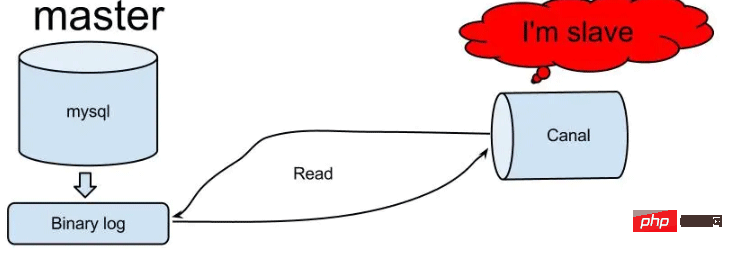 怎么使用SpringBoot+Canal实现数据库实时监控May 10, 2023 pm 06:25 PM
怎么使用SpringBoot+Canal实现数据库实时监控May 10, 2023 pm 06:25 PMCanal工作原理Canal模拟MySQLslave的交互协议,伪装自己为MySQLslave,向MySQLmaster发送dump协议MySQLmaster收到dump请求,开始推送binarylog给slave(也就是Canal)Canal解析binarylog对象(原始为byte流)MySQL打开binlog模式在MySQL配置文件my.cnf设置如下信息:[mysqld]#打开binloglog-bin=mysql-bin#选择ROW(行)模式binlog-format=ROW#配置My
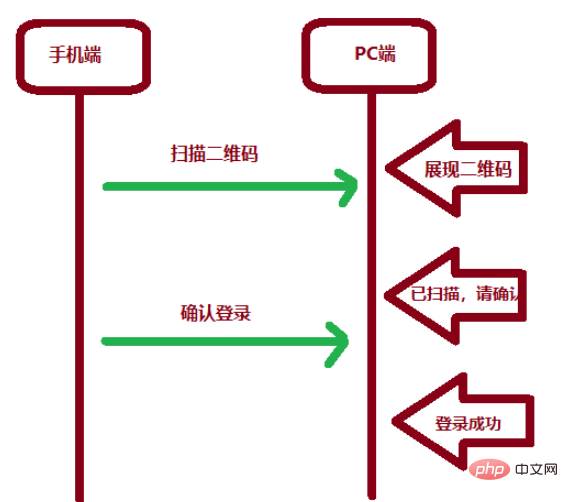 SpringBoot怎么实现二维码扫码登录May 10, 2023 pm 08:25 PM
SpringBoot怎么实现二维码扫码登录May 10, 2023 pm 08:25 PM一、手机扫二维码登录的原理二维码扫码登录是一种基于OAuth3.0协议的授权登录方式。在这种方式下,应用程序不需要获取用户的用户名和密码,只需要获取用户的授权即可。二维码扫码登录主要有以下几个步骤:应用程序生成一个二维码,并将该二维码展示给用户。用户使用扫码工具扫描该二维码,并在授权页面中授权。用户授权后,应用程序会获取一个授权码。应用程序使用该授权码向授权服务器请求访问令牌。授权服务器返回一个访问令牌给应用程序。应用程序使用该访问令牌访问资源服务器。通过以上步骤,二维码扫码登录可以实现用户的快
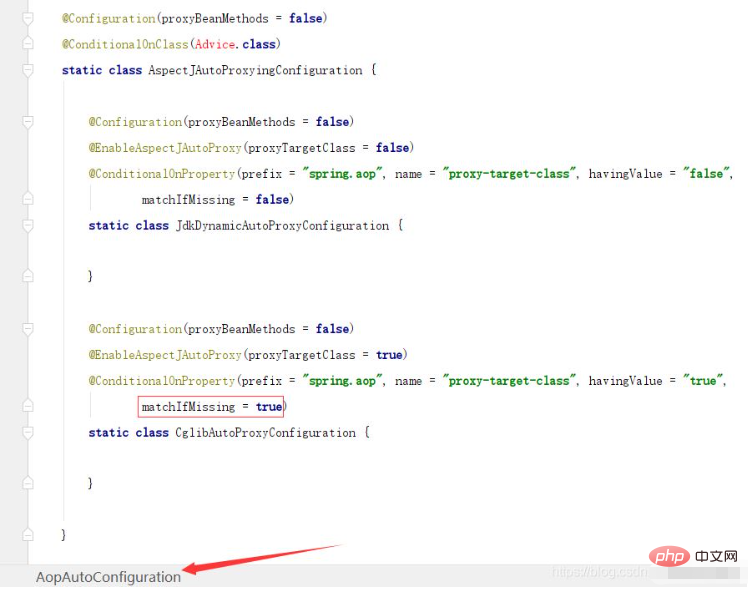 SpringBoot/Spring AOP默认动态代理方式是什么May 10, 2023 pm 03:52 PM
SpringBoot/Spring AOP默认动态代理方式是什么May 10, 2023 pm 03:52 PM1.springboot2.x及以上版本在SpringBoot2.xAOP中会默认使用Cglib来实现,但是Spring5中默认还是使用jdk动态代理。SpringAOP默认使用JDK动态代理,如果对象没有实现接口,则使用CGLIB代理。当然,也可以强制使用CGLIB代理。在SpringBoot中,通过AopAutoConfiguration来自动装配AOP.2.Springboot1.xSpringboot1.xAOP默认还是使用JDK动态代理的3.SpringBoot2.x为何默认使用Cgl
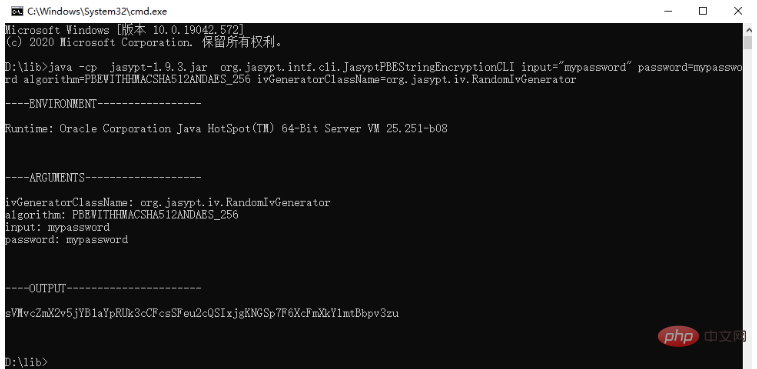 spring boot怎么对敏感信息进行加解密May 10, 2023 pm 02:46 PM
spring boot怎么对敏感信息进行加解密May 10, 2023 pm 02:46 PM我们使用jasypt最新版本对敏感信息进行加解密。1.在项目pom文件中加入如下依赖:com.github.ulisesbocchiojasypt-spring-boot-starter3.0.32.创建加解密公用类:packagecom.myproject.common.utils;importorg.jasypt.encryption.pbe.PooledPBEStringEncryptor;importorg.jasypt.encryption.pbe.config.SimpleStrin
 使用Java SpringBoot集成POI实现Word文档导出Apr 21, 2023 pm 12:19 PM
使用Java SpringBoot集成POI实现Word文档导出Apr 21, 2023 pm 12:19 PM知识准备需要理解ApachePOI遵循的标准(OfficeOpenXML(OOXML)标准和微软的OLE2复合文档格式(OLE2)),这将对应着API的依赖包。什么是POIApachePOI是用Java编写的免费开源的跨平台的JavaAPI,ApachePOI提供API给Java程序对MicrosoftOffice格式档案读和写的功能。POI为“PoorObfuscationImplementation”的首字母缩写,意为“简洁版的模糊实现”。ApachePOI是创建和维护操作各种符合Offic
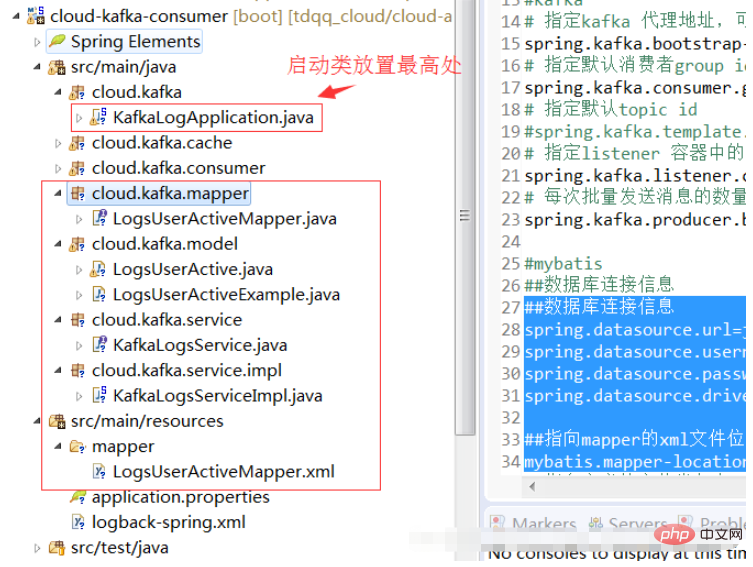 springboot怎么配置mybatis和事务管理May 10, 2023 pm 07:13 PM
springboot怎么配置mybatis和事务管理May 10, 2023 pm 07:13 PM一、springboot与mybatis的配置1.首先,springboot配置mybatis需要的全部依赖如下:org.springframework.bootspring-boot-starter-parent1.5.1.RELEASEorg.springframework.bootspring-boot-starter-web1.5.1.RELEASEorg.mybatis.spring.bootmybatis-spring-boot-starter1.2.0com.oracleojdbc
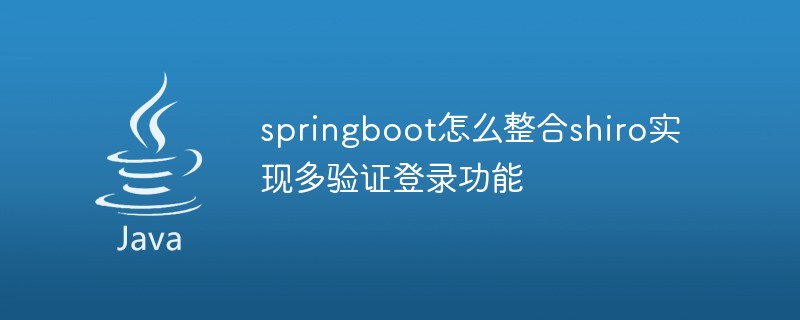 springboot怎么整合shiro实现多验证登录功能May 10, 2023 pm 04:19 PM
springboot怎么整合shiro实现多验证登录功能May 10, 2023 pm 04:19 PM1.首先新建一个shiroConfigshiro的配置类,代码如下:@ConfigurationpublicclassSpringShiroConfig{/***@paramrealms这儿使用接口集合是为了实现多验证登录时使用的*@return*/@BeanpublicSecurityManagersecurityManager(Collectionrealms){DefaultWebSecurityManagersManager=newDefaultWebSecurityManager();


熱AI工具

Undresser.AI Undress
人工智慧驅動的應用程序,用於創建逼真的裸體照片

AI Clothes Remover
用於從照片中去除衣服的線上人工智慧工具。

Undress AI Tool
免費脫衣圖片

Clothoff.io
AI脫衣器

AI Hentai Generator
免費產生 AI 無盡。

熱門文章

熱工具

SublimeText3 Mac版
神級程式碼編輯軟體(SublimeText3)

PhpStorm Mac 版本
最新(2018.2.1 )專業的PHP整合開發工具

Atom編輯器mac版下載
最受歡迎的的開源編輯器

mPDF
mPDF是一個PHP庫,可以從UTF-8編碼的HTML產生PDF檔案。原作者Ian Back編寫mPDF以從他的網站上「即時」輸出PDF文件,並處理不同的語言。與原始腳本如HTML2FPDF相比,它的速度較慢,並且在使用Unicode字體時產生的檔案較大,但支援CSS樣式等,並進行了大量增強。支援幾乎所有語言,包括RTL(阿拉伯語和希伯來語)和CJK(中日韓)。支援嵌套的區塊級元素(如P、DIV),

Dreamweaver Mac版
視覺化網頁開發工具






